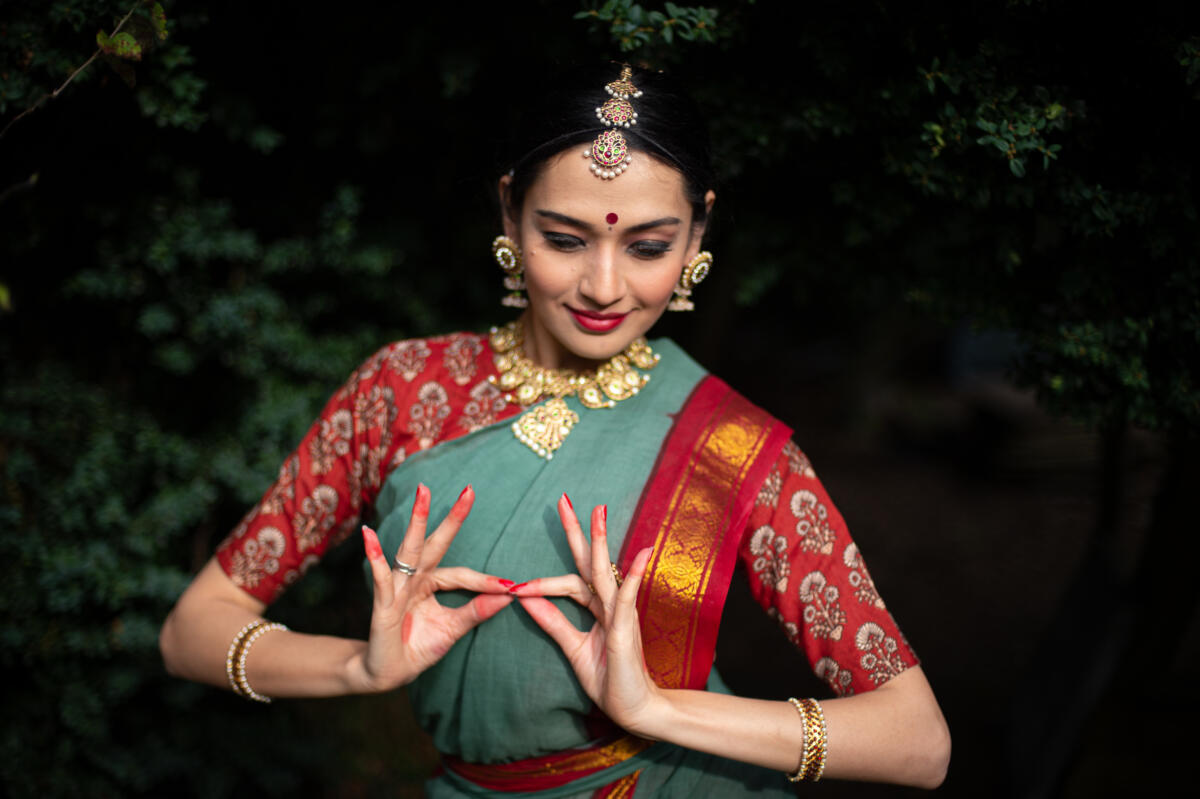A study of Asamyuta Hasta

by Suhani Dhanki
#WednesdayWisdom is a series that began during the 40th anniversary celebration of Akademi to revisit Indian classical dance roots through dance texts by sharing gems of knowledge from ancient Shastras that hold relevance even today.
My Guru, eminent Performing Academician, Dr. Sandhya Purecha, has always trained her students through the extensive study of shastra (theory) and prayoga (practice) in the most authentic Guru Shishya Parampara. Compiling #WednesdayWisdom is just a humble endeavour to share my Guru’s teachings in my own limited capacity with a larger audience.
Indian classical dance, in essence communicates, expresses and evokes by carrying the feelings towards the spectator (Abhinaya). This stylised version of expression is discussed at length in various Dance texts that mention four such techniques of Abhinaya that should be applied harmoniously:
1) Angika (physical – of limbs)
2) Vachika (verbal – of speech)
3) Aharya (ornamental – of costumes and make-up)
4) Satvika (temperamental – of satva)
For the purpose of Angikabhinaya, the Abhinaya Darpanam divides the body into 3 parts – Anga, Pratyanga and Upanga.
The Anga comprises – head, hands, chest, sides, waist and feet. Some others include neck too.
The Pratyanga comprises – shoulder-blades, arms, back, belly, thigh, and shanks. Others add wrists, elbows and knees as well.
The Upanga comprises – shoulders, in the head – eyes, eyebrows, eyeballs, cheeks, nose, jaw, lips, teeth, tongue, chin and face, in other limbs – heels, ankles, toes and fingers.
The author of the Abhinaya Darpanam, Nandikeshwara states that when the Anga (major limbs) move, the Pratyanga and Upanga (minor limbs) also move and it is in the Natyashastra that we find mention of the variations in movement of all the major and minor limbs.
A popular verse from the Sanskrit text Abhinaya Darpanam states:
‘Asyena alambayed gitam, Hastena artham pradarshayet, Chakshurbhyam darshayet bhavam, Padabhyam talamachare’
Trans.: A dancer should sing with the mouth, express the meaning through the hands, express the states in the eyes, and keep time-measure with the feet.
The hands, thus, serve as the communicative medium to convey the story, and according to the imagination and creativity of the creator, they can be used intelligibly and multifariously to express the meaning. This liberty in interpretation and application finds abundant mention in all the ancient Indian dance texts emphasising that scriptures provide the basic resource pool, the foundational practice of which must evolve and progress with time and requirements.
Broadly, there are 3 types of hand gestures –
1) Asamyuta Hasta – Single Hand gestures
2) Samyuta Hasta – Double Hand (Combined) gestures
3) Nritta Hasta – Hands used in dance
Dance texts also mention combinations of these hand gestures to denote various objects, ideas, nature, seasons, planets, colours, numbers, scriptures, family relations, Gods, incarnations of the Hindu Lord Vishnu, Lords of the directions etc.
This article focuses on the study of the Asamyuta Hastas – Single-hand gestures.